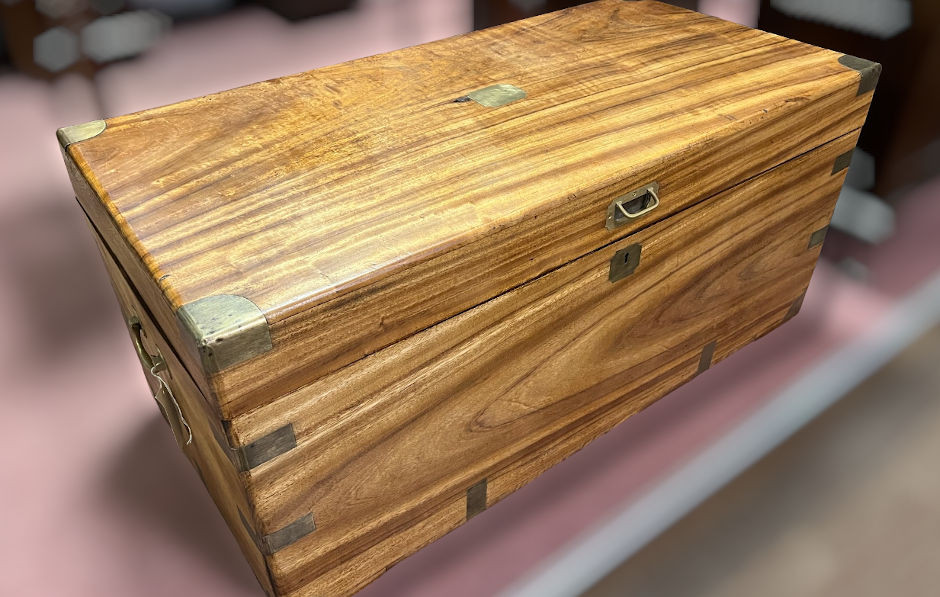
Today, the majority of homes will have at least one chest of drawers, if not several. However, it hasn’t always been the way and up to the 17th century, a chest of drawers is more like to have just been a chest, with inner, dividing drawers not being introduced until the latter part of the century.
What is an antique chest?
An antique chest is essentially a container or box, usually crafted from wood. The main purpose of the chest has always been storage and they were originally used for storing items of clothing, particularly by the noble classes who were wealthy enough to have multiple sets of clothes.
Is there a difference between a chest and a trunk?
With the advent of the railway system in Victorian Britain, which opened up cross-country travel to many, as well as the rise in long distance travel by boat, the antique chest evolved from a piece of permanent furniture, into the travel trunk, which was eventually overtaken by the suitcase.
History of the chest
The earliest known chests date back to the Egyptians who employed sophisticated methods in the production of chests and boxes, including dovetail joints, gilding and metalwork. One of the finest examples of an Egyptian chest is the Painted Chest of King Tutankhamun in the Cairo Museum.
By Medieval times, low chests were dual purpose and often used as seating and in Europe there was a trend to add a hinged lid and a band of strengthening iron over the body of the chest which could be fitted with a lock. In particular, the French employed iron, in the form of wrought iron scrollwork, as decoration, whereas Tudor chests in England featured carvings that mimicked folds of material, known as linenfold panels.
Types of antique chest
The style of antique chests was influenced by their intended purpose. Hence chests without feet were used for travelling and those with legs were kept in the home as the contents were elevated away from the floor and therefore easier to keep clean. Antique wooden chests were crafted from a variety of wood, including pine, oak and walnut. The following are popular styles of antique chest.
Antique blanket chests
An antique blanket chest has a hinged lid and was used for storing linen. In America, they are often referred to as Hope Chests or Dowry Chests as they were often used by unmarried girls to store items they would use once married. Commonly made from pine, blanket chests can also be found in walnut and mahogany.
Antique pine chests
As pine was readily available and relatively cheap, many ‘country’ chests were made from it. The antique pine chest could be found in the homes of those who could not afford more expensive timber. Today, antique pine chests are sought after to achieve a country style of interior design.
Antique Chinese chests
Dating from the 18th and 19th centuries, antique Chinese chests were made from camphor wood and originally used as storage in Chinese homes. They were later used in the sea trade, for the transportation of porcelain, silk and tea to Europe.
Antique trunks
Used predominantly for travel, trunks are available in different styles, including flat-topped and dome-topped. Dome-topped trunks are also referred to as camel or barrel trunks and were used for valuable or delicate items as, in transit, nothing could be stacked on top of them.
For the international retail buyer, our Hemswell dealers have a wide selection of English, European and Oriental antique chests available to ship, some of which can be seen online. For those unable to visit our centres in person, we are able to offer exclusive live virtual shopping tours, conducted by our Managing Director, Robert Miller, who is able to negotiate the most competitive shipping and import costs on behalf of our overseas customers. Simply make the centres aware of the items you are interested in and we will accompany you on a video tour of relevant pieces, while discussing their finer points with you.